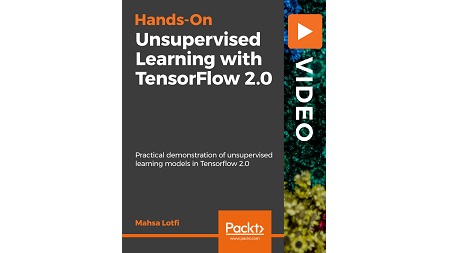
English | MP4 | AVC 1920×1080 | AAC 48KHz 2ch | 2h 30m | 371 MB
Learn unsupervised learning in Python with hands-on practical applications for each learning model.
Nowadays, machine learning is becoming increasingly important to businesses. It is used to solve various business problems using supervised and unsupervised algorithms. In unsupervised learning, Artificial Intelligence systems try to categorize unlabeled and unsorted data based on the similarities and differences that exist among data. In this case, the capabilities of unsupervised learning methods to generate a model based on data make it possible to deal with complex and more difficult problems in comparison with the capabilities of supervised learning. In this course, we examine different unsupervised learning methods and solve practical problems using the TensorFlow platform. Solving examples of real-world problems using TensorFlow is more inspiring and compelling and will enhance your practical skills.
By the end of this course, you will gain significant hands-on experience using unsupervised learning algorithms with TensorFlow and will be able to make your own model to solve relevant real-world learning problems.
Learn
- The fundamentals of unsupervised learning algorithms and their importance
- TensorFlow 2.0 terminology
- Hands-on experience solving real-world problems in unsupervised learning
- A practical approach to solving business problems, ranging from data preprocessing to model-building from a given dataset
Table of Contents
Getting Started with Unsupervised Learning and TensorFlow 2.0
1 The Course Overview
2 Unsupervised Machine Learning and Its Applications
3 Overview of TensorFlow 2.0
4 Setting Up the Environment
Clustering
5 What Is Clustering
6 K-Means Clustering
7 K-Means Clustering Implementation Using TensorFlow
8 Hierarchical Clustering
9 Hierarchical Clustering Implementation Using Python
10 t-SNE
11 t-SNE Clustering Implementation Using Python
12 DBSCAN
13 DBSCAN Clustering Implementation Using Python
Principal Component Analysis
14 What Is PCA
15 Implementation of PCA on IRIS Dataset Using TensorFlow 2.0
Anomaly Detection
16 Anomaly Detection and Its Applications
17 Implementation of Anomaly Detection Using TensorFlow
Autoencoders
18 Autoencoders and Their Applications
19 Implementation of AEs on MNIST Dataset Using TensorFlow 2.0
Deep Belief Networks
20 Deep Belief Networks and Their Applications
21 Implementation of Deep Belief Nets
Generative Adversarial Networks
22 Generative Adversarial Networks and Their Applications
23 Implementation of GANs Using TensorFlow 2.0
24 Generator
25 Optimizers
Self-Organizing Maps
26 Self-Organizing Maps and Their Applications
27 Implementation of Self-Organizing Maps on Breast Cancer Dataset
Resolve the captcha to access the links!